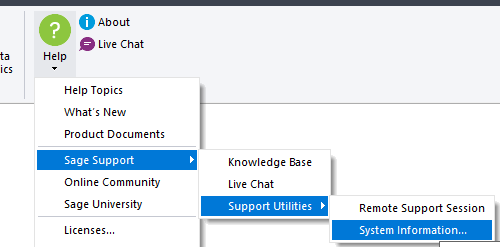I have a client that is running Sage 6.0A. I have SQL backs up both their company and system databases. When I try to login to the company, I get a message stating the the Company database is a later version than the system database.
How do I fix this?










